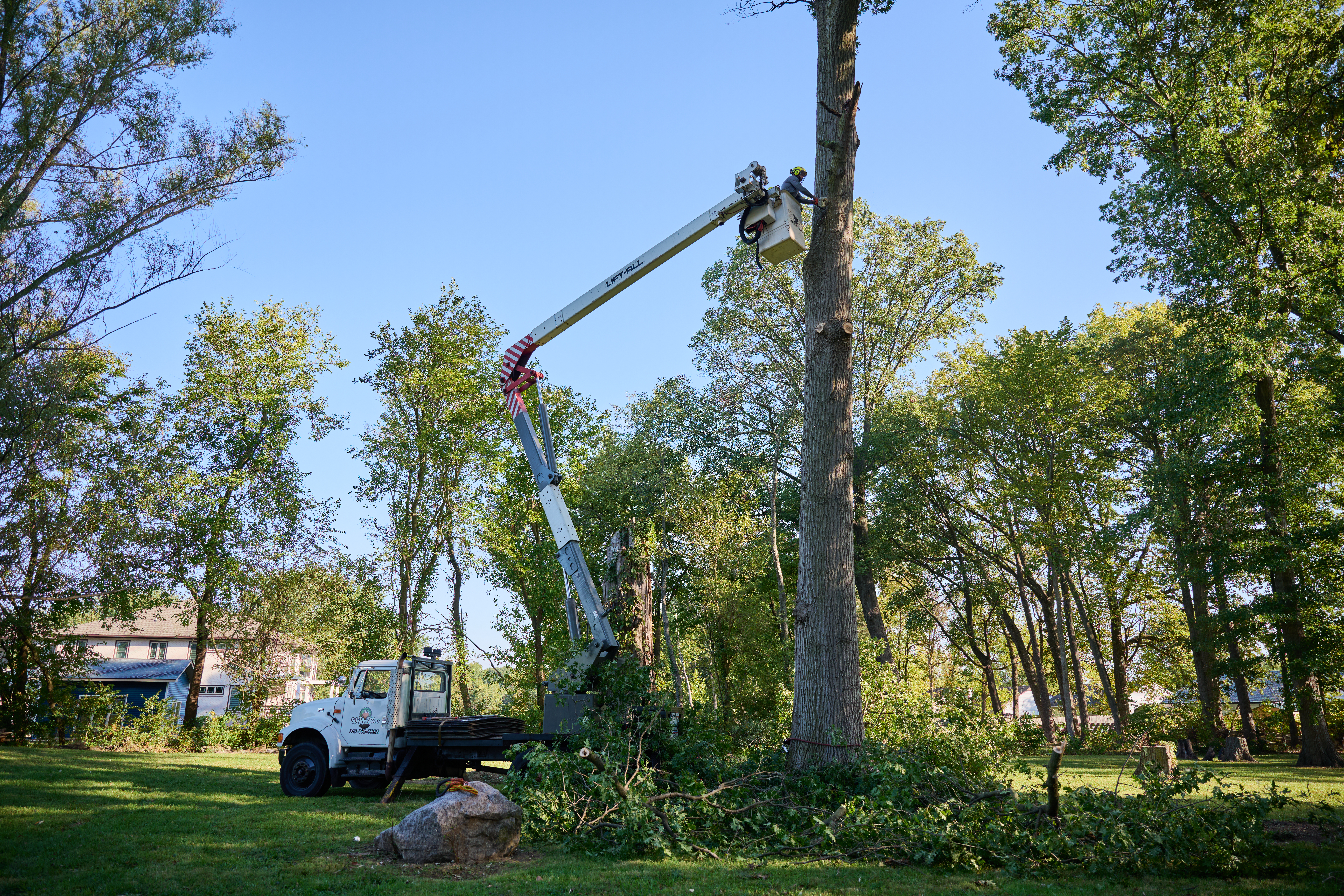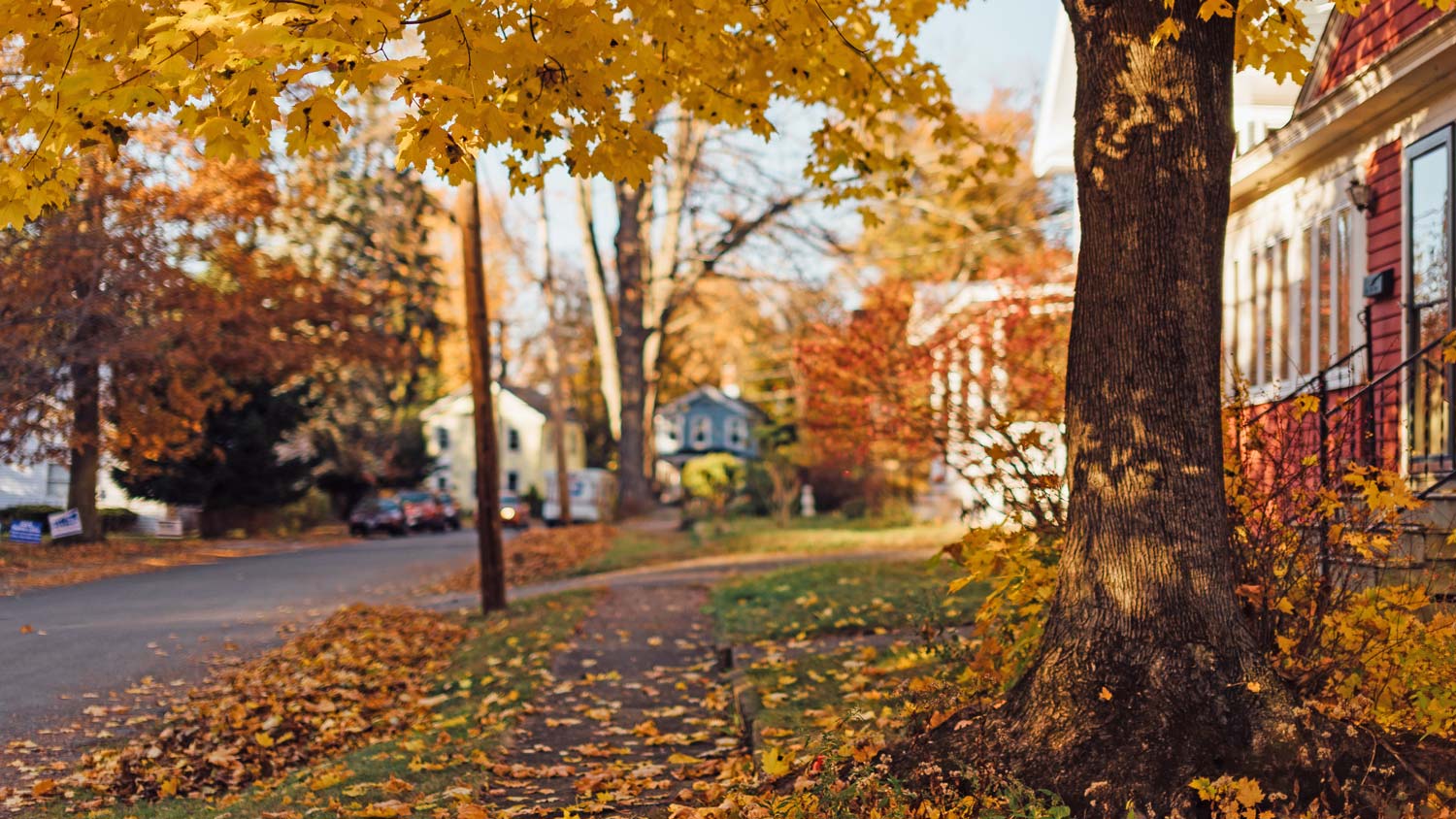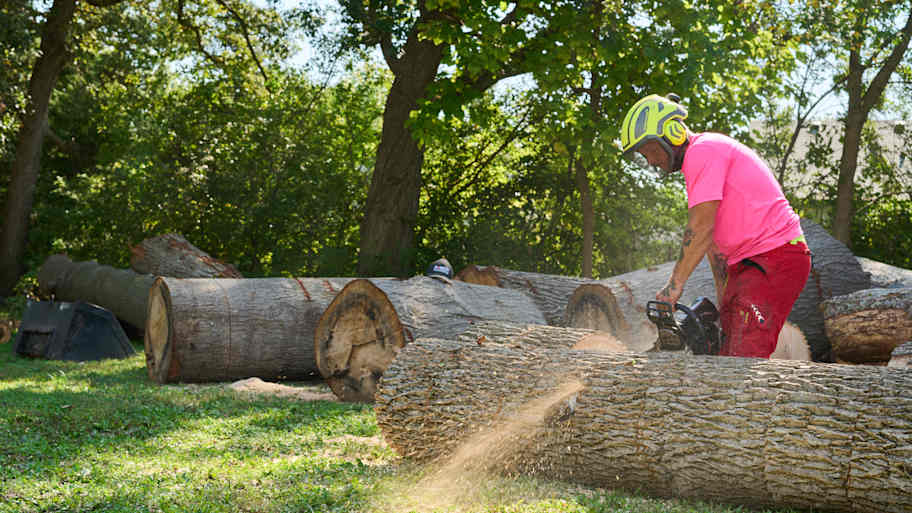
The most significant factor in tree removal costs is the amount of debris. Read on to learn more about the average tree debris removal costs.
We’ll help you get to the root of the problem


Insects like aphids and diseases like cankers can kill maple branches.
Droughts and sudden frosts can also damage maple branches.
The cost of a tree inspection starts at $150.
Prized for their beautiful foliage, maple trees grow into towering beauties over the decades. That’s why it’s so upsetting when you notice that some of the branches have started dying off. This problem is common enough that it has a name: maple decline. If you find yourself asking why are branches on my maple tree dying?, our guide breaks down the common causes and the next steps to take to keep your maple tree healthy.
In most cases, there will be noticeable signs that your maple tree is in need of professional intervention. Look for these indicators that signal that it’s time to call in the experts or say your goodbyes.
The first sign that your maple tree is dying typically shows up in its leaves. If your once-vibrant foliage is now yellow, brown, or black, it means your tree is lacking the necessary nutrients or water to thrive.
Cracked or peeling bark is another strong indicator that your maple tree is dying. This symptom could be the result of a tree disease or a pest infestation. These common issues are harmful to your tree and could compromise its overall health if not treated immediately.
Branches with brittle or hollow wood can also signal that your tree is declining. Evidence of dead or dying branches includes branches that lose their leaves prematurely or discoloration compared to other branches.
If you’re concerned for your maple tree’s health, inspect it carefully to determine which of these causes is the culprit.
When insects attack maple trees, they tend to coalesce in particular spots, which can lead to die-off in those areas, branch by branch. Common culprits include:
Aphids: Aphids like the very noticeable wooly alder aphid may choose maple trees as a feast. As they suck out sap from vulnerable stems, those stems can die off over time.
Ambrosia beetles: Hailing from Asia, these beetles target young maple trees and bore into the bark to reach the tender wood within. At that point, a fungus hitchhiking on the beetles takes over, leading to branch death and other problems. Other borers act much the same way, including shoot borers and petiole borers.
Fortunately, bugs rarely threaten the life of a maple tree. But because they can cause unsightly damage in high numbers, it’s important to treat an infestation if you notice it. You can try natural remedies or contact a local tree maintenance professional for advice.
Many different diseases can attack a maple tree and cause branches to die, and they’re not always easy to spot. Common maple diseases include:
Anthracnose: This common fungal disease can attack many different parts of a maple tree, primarily focusing on foliage but also infecting new shoots and twigs, killing them off over time.
Leaf or tar spots: These fungi infect leaves, and in severe cases they can cause early leaf drop that can make it look like branches are dying.
Wilts: Wilts like Verticillium wilt are fungi that get their name from the way they make tree leaves wilt and die off. They can be dangerous because they infect the inner tree structure (usually causing brown streaks inside the wood) and can kill off entire parts of a maple.
Cankers: Cankers are a type of fungal infection that can form noticeable lesions on bark, but the damage can go well below the surface. Many types of cankers, including branch cankers, are known to kill maple branches.
Sapwood rot: Sapwood rots are similar to wilts but attack damaged parts of a tree and usually have visible shelf fungi markings.
Bacterial leaf scorch/leaf burn: This is caused by a fast-spreading bacteria that devours leaves. It’s a particular problem for maple trees. While the tree limbs themselves are usually untouched, if the leaf scorch spreads enough, the maple loses most of its leaves early and becomes more vulnerable to other attacks. Notably, fungicides don’t work against bacterial infections like this.
If you catch diseases early, the prognosis for the maple tree is usually good. You should do some serious, targeted pruning to get rid of infected growth and applya recommended fungicide. If you have multiple maple trees, conduct thorough inspections to make sure the disease doesn’t spread in the coming months.
Trees usually die slowly, so environmental problems can go unnoticed until branches start dying. One of the most common examples is drought or lack of water, which slowly dries out the tree until visible effects start showing. In these harsh conditions, a maple tree will usually start dying from the outside, so the newest growth and top of the canopy will show dead branches first.
Excessive heat may cause scorched leaves, and if one side of the maple tree bears the brunt of the hot sun, its leaves may die off.
Sudden frosts can also damage a maple’s leaves and branches, especially if the tree is in a shady area. But although maple trees are particularly vulnerable to frost, any damaged twigs and branches typically grow back in time.

Root damage is an insidious foe, causing hidden problems that can kill a tree years later. Landscaping, leveling nearby ground, or running heavy equipment over the ground can crush or choke roots, a phenomenon called soil compaction. Sometimes roots are even cut directly to make room for sidewalks, driveways, or patios. While maple trees can survive with some of their roots destroyed, the outlook isn’t good if too many roots are ruined.
Usually, the damage begins to show on the side that experienced the most root damage. Dying branches are a common sign, as trees can no longer draw in enough water and nutrients from the soil. Unfortunately, by the time these signs appear, there’s not much homeowners can do. Your best bet is prevention; aerating the soil near a maple tree can help prevent or reduce soil compaction.
Rock salt and ice melt that’s used to keep paths or sidewalks safe during winter can significantly harm maple trees.
While maple trees may be hibernating during these times, the chemicals from these treatments run off into the soil and gather there. In large amounts, salt, magnesium and other common ingredients of ice melts can poison maple trees, stunting growth and eventually killing them. Some of these ingredients are even used as herbicides to kill trees professionally. Take great care when using ice melt near maple trees.
A girdling root is a large root that, instead of growing away from the tree, wraps around the base of the trunk instead. As the root grows, it slowly cuts off the flow of sap and nutrients to the crown of the tree, literally choking it. This happens slowly over years, and one side of the tree is often affected first, leading to dying branches.
Girdling roots often appear with some of the problems mentioned above, like soil compaction. They’re more likely if a maple tree is grown inside a container as a sapling for too long before being transplanted. Once a girdling root has been identified, remove it carefully to help save the tree. If the root is large or has grafted into the trunk already, you may need professional help.
If you notice signs that your maple tree is declining, your first step should be to hire a professional arborist to inspect your maple tree to properly diagnose it and determine a viable plan. Depending on its ailment, treatment plans may include applying fungicides, pruning affected branches, or working to improve the tree’s soil conditions to prevent decay.
Your arborist will recommend next treatment steps and the best pros to hire to carry them out. For example, if they suggest removing dead or dying branches from the tree, you should hire a local tree trimmer to help refresh the tree.
If you have a beloved maple with dying branches, an arborist near you can diagnose and treat the problem. Hiring a tree professional greatly increases the odds that your maple tree will survive and thrive. A tree inspection costs anywherefrom $150 to over $500.
I had Ace Fireplace Services install custom chimney caps for my home, and the results are stunning. They fit like a glove and have added a touch of sophistication to my chimney. I can't recommend their services enough.
Great tree company, very professional and honest. Glad we found them, they had the best pricing
Maple Tree Service should serve as a mentor for other business! Customer service was superior and beyond expectation. Response to request was prompt. The representative was very courteous and proud of the company. Quote was given during initial visit and work date established. A follow up...
We used Unique Hardwood Floor LLC three years ago to work on the floors of a 70 year old home that needed a great deal of work. Some floors needed repairs, some were replaced and others just needed to be refinished. It was a complicated job as they needed to blend the old and the new to...
I play a yearly service fee to get my heat and AC checked out, twice a year. It's awesome. The techs are always great.
Very good service. Will use them again in the future.
The team (Kai and Co.) that handled our move was great! Great attitudes; great service; great care. Please reconsider your policy of no moves to AZ. Weâ??d love to use you again in a few months!
Best service I've received. Prompt, friendly, informative and trusting. Highly recommend.
Amazing. Very professional service and a thorough and well job done.
From average costs to expert advice, get all the answers you need to get your job done.

The most significant factor in tree removal costs is the amount of debris. Read on to learn more about the average tree debris removal costs.

Trimming your bushes is one of the less costly aspects of landscaping, and it’s helpful to bundle many trimming services together to save money.

The cost to remove palm trees depends on several factors, including their size, location, and more. Our guide shows the average palm tree removal costs.

When pruning crepe myrtle trees, it’s crucial to be extra cautious. Learn how to prune a crepe myrtle without damaging it.

Follow these tips to learn how to find a good tree removal service. Doing a little research can help you save time and money when you need to say goodbye to your trees.

How much does an arborist cost? This guide explains the cost of different services, ongoing expenses, and other factors to consider when hiring an arborist.